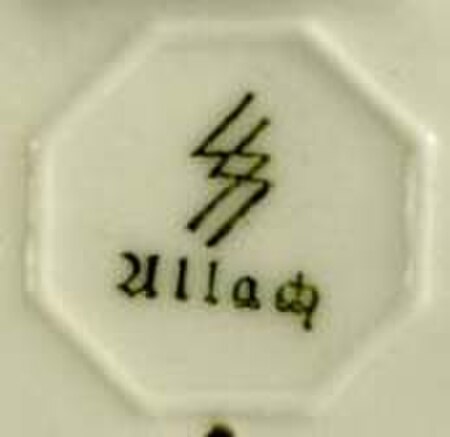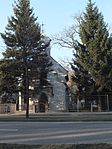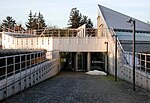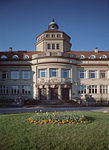Allach (porcelain)
German porcelainNazi SSNazi propaganda

Allach porcelain (pronounced 'alak') a.k.a. Porzellan Manufaktur Allach was produced in Germany between 1935 and 1945. After its first year of operation, the enterprise was run by the SS with forced labor provided by the Dachau concentration camp. The emphasis was on decorative ceramics —objets d'art for the Nazi regime. The company logo included stylized SS runes. Sometimes in place of the company name, the pottery markings mentioned the SS: "DES - WIRTSCHAFTS - VERWALTUNGSHAUPTAMTES".
Excerpt from the Wikipedia article Allach (porcelain) (License: CC BY-SA 3.0, Authors, Images).Allach (porcelain)
Reinhard-von-Frank-Straße, Munich Industriebezirk (Allach-Untermenzing)
Geographical coordinates (GPS) Address Nearby Places Show on map
Geographical coordinates (GPS)
| Latitude | Longitude |
|---|---|
| N 48.190555555556 ° | E 11.473888888889 ° |
Address
Reinhard-von-Frank-Straße 8
80997 Munich, Industriebezirk (Allach-Untermenzing)
Bavaria, Germany
Open on Google Maps










